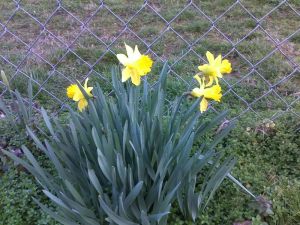You’ve no doubt seen references to the research suggesting that tea, especially unfermented (green) tea, may deliver many health benefits.
Researchers say that regular tea-drinking (2-3 cups per day) may help lower cholesterol, manage blood sugar, promote weight loss, protect against several forms of cancer, boost immunity, and reduce inflammation.
Applied topically, tea can relieve the discomfort of rashes, stings, and hemorrhoids, and may help reduce acne flareups.
Why green tea?
The “fermentation” (actually oxidation) processes that yield the many other forms of tea deepen and alter the flavors leaves, but they also remove some of the plant compounds (“phytocompounds”) that deliver tea’s health benefits.
Which tea? Which form?
Once you begin delving into the subject of tea, it’s easy to get confused. Will it be loose (thick or thin?), powdered, bagged, brewed and bottled? Chai, citrus, or jasmine? A green-tea extract? A tincture, a pill, a syrup, or a soda? What about a snack?
Why not start by brewing some loose green tea leaves from a specialty or health-food store near you. If you live near an Asian market, you’ll have a much larger choice. Buy small quantities and store them in airtight containers in the freezer to maintain their flavor and potency.
By the way, if you want to maximize the health benefits of tea, drink it without milk. Proteins in the milk decrease the concentration of many of tea’s beneficial phytocompounds.
How to brew
Add a teaspoon of tea leaves to a cup of hot water. It’s your choice whether to steep the leaves in a tea ball or other container, or strain them after they’ve steeped. Some people even leave the tea leaves in and consume them along with the liquid.
The hotter the water (closer to boiling) and the longer the steeping, the more healthful plant compounds the water will extract. However, since some of these compounds are bitter, many tea lovers prefer a briefer steeping time for their sipping teas.
Tea in cooking
What about liberating tea from the beverage category and using the leaves themselves in cooking?
Try adding strong tea as an ingredient in meat or poultry marinades, soups, stocks, and gravies. Or try adding the re-constituted leaves themselves to omelets, soups, or stir fries. Think of them as a leafy vegetable. Eating them adds nutrients and fiber to the medicinal punch this plant delivers.
A few other uses for tea
- The astringent properties in tea called tannins make it a natural skin toner. Helps acne, too.
- Used as a final rinse, tea conditions and restores shine to hair.
- Dry tea leaves absorb odors as well as baking soda. Leave a few bags in the fridge, or drop some into shoes, pocketbooks, cars
- Strong tea left in cooking pots overnight will remove burned-on food and stains.
- Cool tea sponged onto skin offers relief from poison ivy, hives, or insect bites.
Finally, you might want to have some fun exploring the art of tasseology—reading the tea leaves to predict the future.

